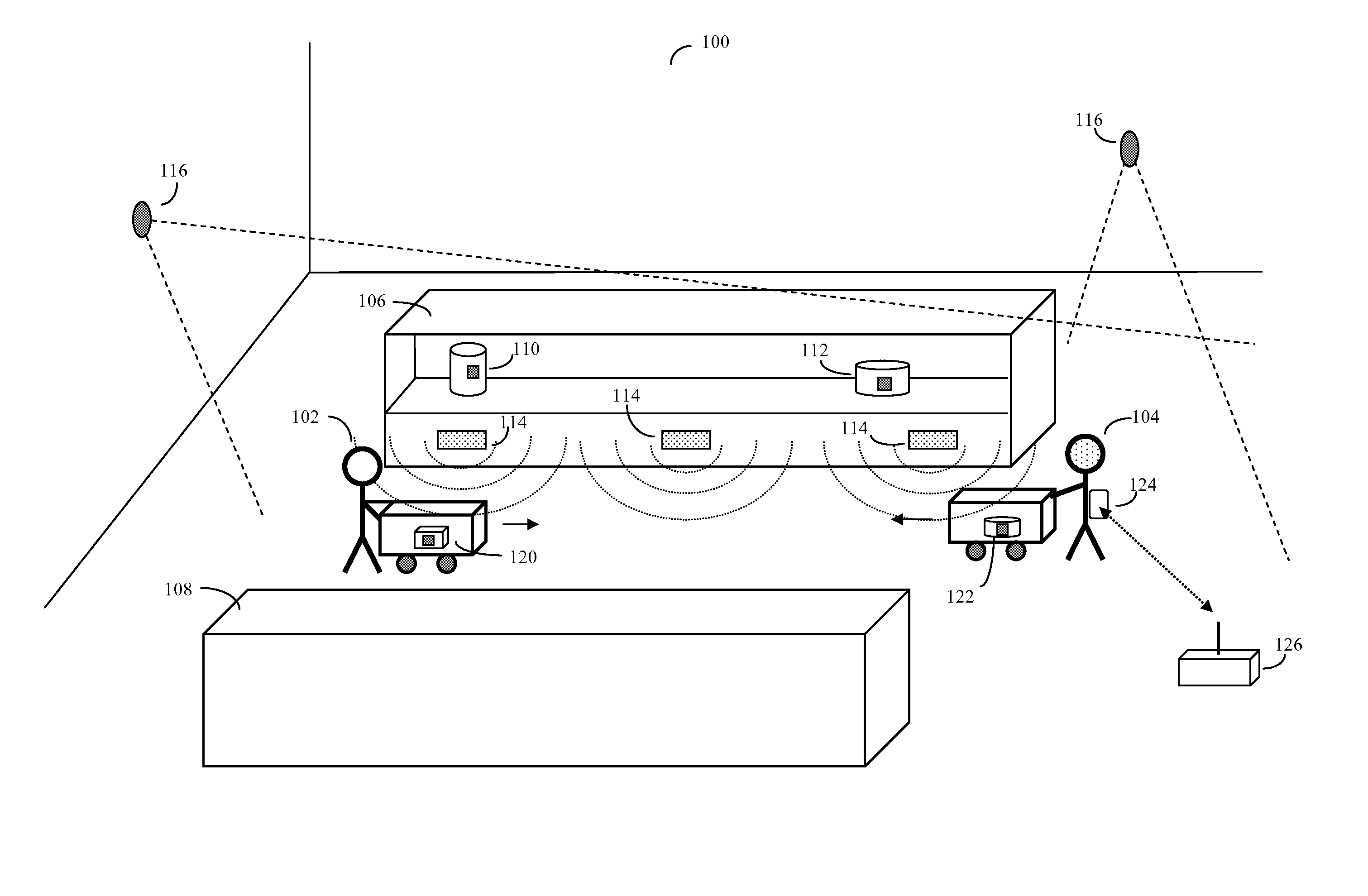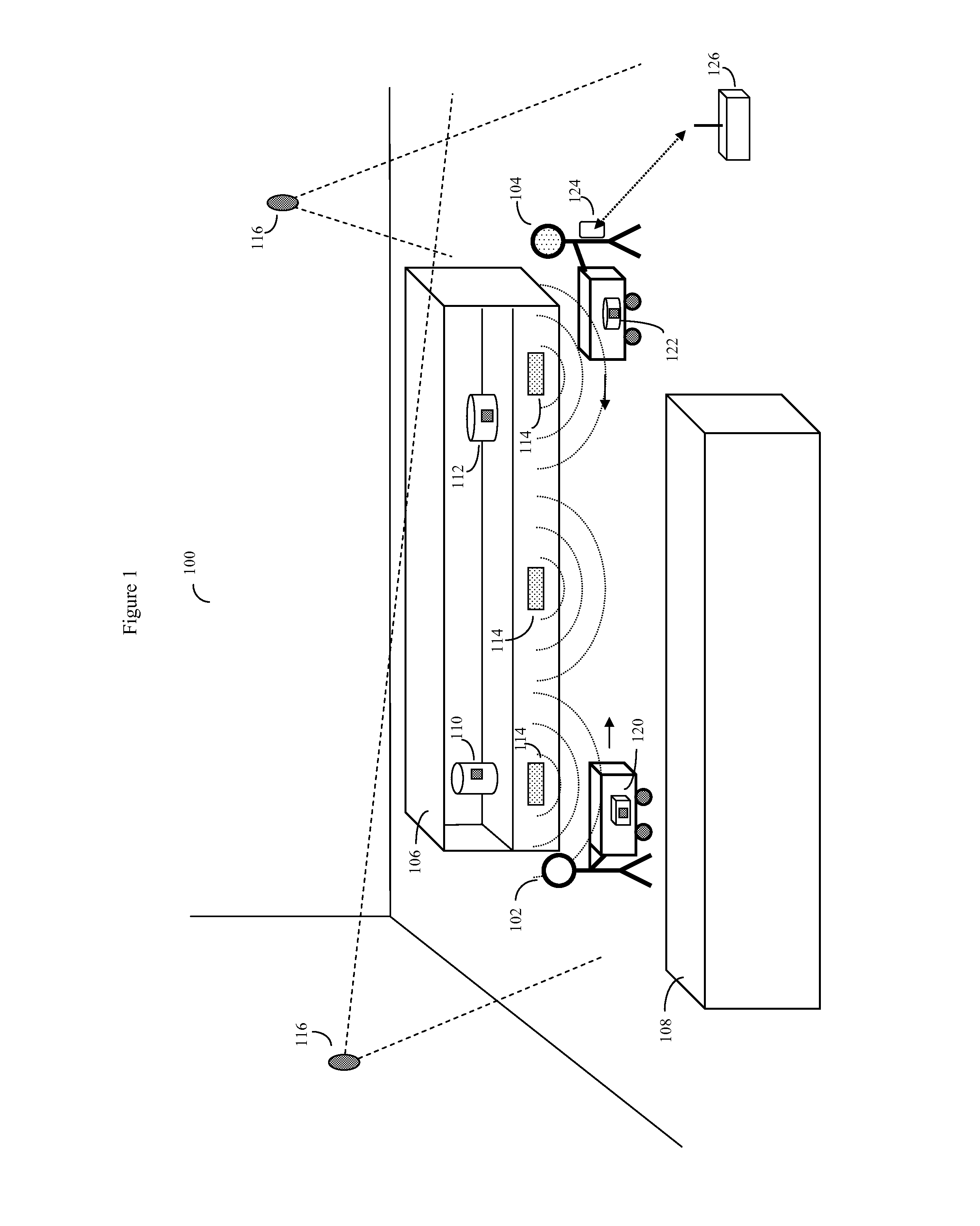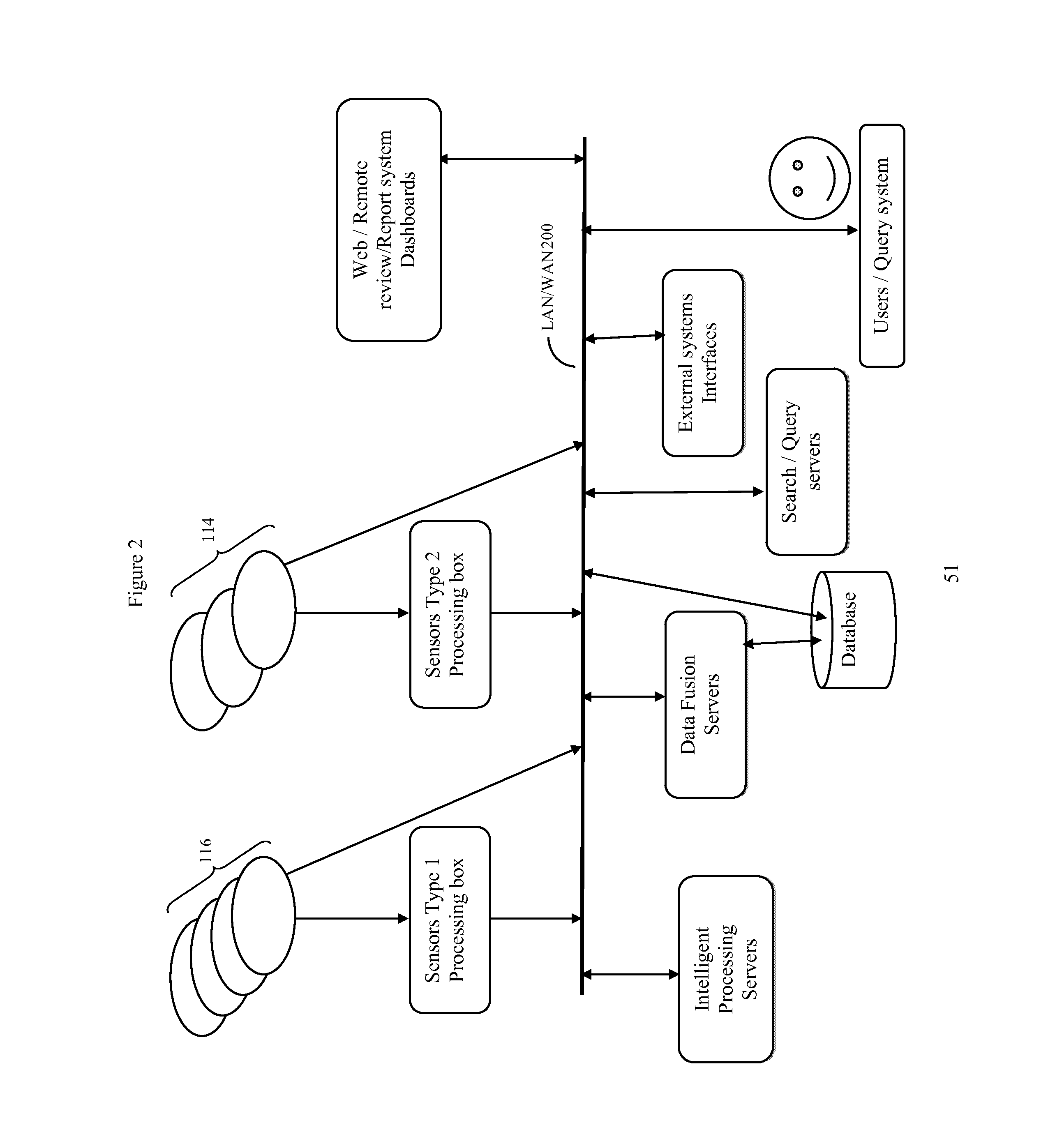Method of tracking moveable objects by combining data obtained from multiple sensor types
- Summary
- Abstract
- Description
- Claims
- Application Information
AI Technical Summary
Benefits of technology
Problems solved by technology
Method used
Image
Examples
case 12a
[0188]Case 12a shows two actors (here people P1 and P2) with paths crossing at point A. Here video sensor data can easily get confused—which actor is which? After the two actor's paths cross, automated video analytics algorithms are likely to incorrectly swap each actor's (person's) identification codes, and assign incorrect paths to the two actors after the crossing.
[0189]The invention's metapersons / metaactors creation algorithm operates by creating all possible paths or trajectories: MP1, MP2, MP3 and MP4. This ensures that the set of hypotheses of trajectories contains, at least as a subset, the true paths of the actors (people) P1 and P2. Which subset is actually correct can be automatically resolved later after the system has gathered more data.
case 12b
[0190]Case 12b represents a different situation where the video sensors may have temporarily not been able to track a particular actor (person) for several seconds. Here again, the invention's metaperson / metaactor creation algorithm operates by creating various alternative paths. The system can consider the possibility both that there were two actors (persons) being tracked (e.g. M1 and M2), or alternatively that only just one actor (person) M3 was being tracked, but was temporarily lost by the video sensors.
[0191]Computing path correlations between actors (e.g. persons) and either tagged objects or tagged actors.
[0192]In some embodiments, the system may be configured to use a hierarchical / multi-resolution weighted approach to computing the correlation or similarity between the paths of two objects such as those of an actor (e.g. person) and that of a tag (which can be located on either an object or an actor). The approach is recursive in nature and goes as follows:
[0193]First the s...
PUM
 Login to View More
Login to View More Abstract
Description
Claims
Application Information
 Login to View More
Login to View More - R&D
- Intellectual Property
- Life Sciences
- Materials
- Tech Scout
- Unparalleled Data Quality
- Higher Quality Content
- 60% Fewer Hallucinations
Browse by: Latest US Patents, China's latest patents, Technical Efficacy Thesaurus, Application Domain, Technology Topic, Popular Technical Reports.
© 2025 PatSnap. All rights reserved.Legal|Privacy policy|Modern Slavery Act Transparency Statement|Sitemap|About US| Contact US: help@patsnap.com



